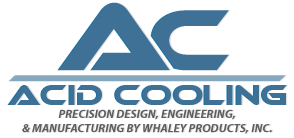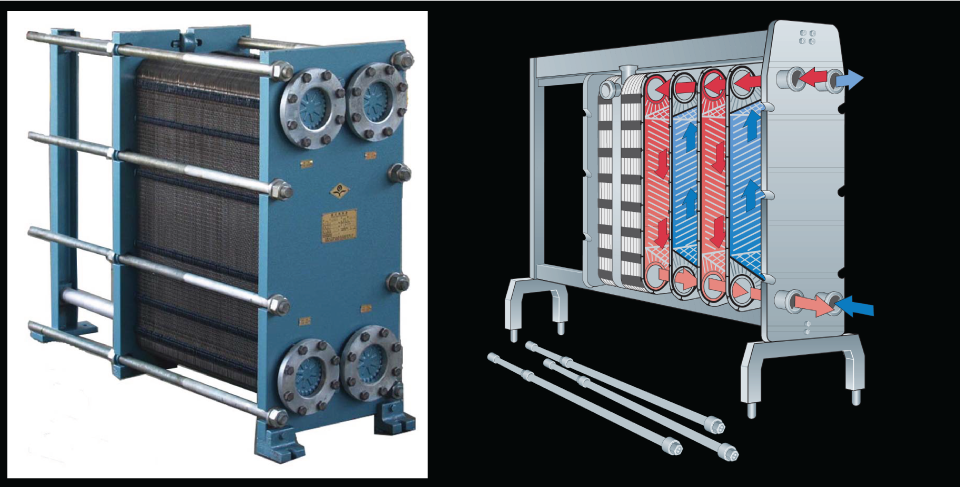Two common types of heat exchangers exist for anodizing tanks that do not have a coil to circulate a water/glycol mixture. These types are plate exchange heaters and immersion coils. A plate heat exchanger uses metal plates to transfer heat between two fluids. These plate and frame heat exchangers come with upgraded seals and 316 stainless plates. Plate heat exchangers are most effective due to energy efficiency, flexibility, easy maintenance and high thermal transfer. Plate heat exchangers produce uniform heat across the transfer area. This uniform process allows for close temperature coefficients and close temperature approaches. Plate heaters require less space, reduce secondary flow rate, and utilize smaller pumps. An acid pump pulls hot acid out of the anodizing tank, circulates it through the plate and frame heat exchanger, and returns the cooled acid to the anodizing tank.
An immersion coil is used when it is not possible to put fittings for an acid pump on the tank. The cold water/glycol mix is circulated through a coil that is placed directly inside the acid mixture tank to cool it. The coil serves as the method of heat exchanging. No acid pump would be required for this. You would utilize the glycol pump on your chiller system. Immersion coils come in a variety of materials titanium, stainless steel, and zirconium. The material used is specific to the type of acid being cooled. Immersion coils can be used for sulfuric and hydrochloric acid applications. Immersion coils have a high heat transfer, high corrosion resistance, and eliminate acid leaks into the condenser.

